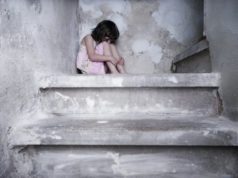 Domestic Violence as a Gateway for Child Abuse
Domestic Violence as a Gateway for Child Abuse
The crime of Domestic Violence is classified as any type of abuse assault undertaken by one member of a cohabitant partnership unto another member of that same partnership; this may include married couples, intimate partners, or individuals sharing a residence with regard to the participation in a romantic relationship. Studies illustrate that Domestic Violence can occur within a variety of settings and forms; similarly, this is a nature shared within the classification of child abuse, as well – domestic violence can manifest itself in a variety of physical, emotional, sexual, or psychological forms.
Children are Victims of Domestic Violence Offenses
The classification of Domestic Violence charges and offenses are rarely uniform; akin to the classification of both victims and perpetrators of child abuse, involved parties within Domestic Violence offenses are neither specific to sexual orientation nor marital status, gender, race, creed, religion, ethnicity, and socioeconomic status – simply put, all forms of domestic abuse can take place without limit:
Primarily, the subjection of children to domestic violence is considered a crime in and of itself; the witness of domestic violence may result in the traumatization of a child, resulting in psychological and emotional damage
The notion of threat and duress within instances of domestic violence commonly prove to be detrimental for a child, in addition to the trauma and damage sustained; the domestic violence offender may pose threats involving potential harm and damage in the event that a child reports the activity witnessed as domestic violence – this action alone can be classified as emotional child abuse
The presence of domestic violence within a household portrays a negative influence with regard to the raising of children, which results from neglect, disrespect, and violence; studies have demonstrated that children produced from households in which domestic violence has taken place are prone to repeat such behavior
Domestic Violence Offenses
As previously stated, the nature of abuse transcends a uniform method of categorization; while primary classifications of domestic violence exist, the events and undertakings involved are quite expansive and specific:
Physical Domestic Violence
Domestic violence – in its physical form – constitutes abuse or assault sustained by one or both members of a romantic partnership
Emotional and Psychological Domestic Violence
This type of Domestic violence constitutes verbal abuse or assault sustained by one or both members of a cohabitation partnership, including the use of insult, threats, and manipulation
Sexual Domestic Violence
Domestic Violence in its sexual form constitutes sexual abuse sustained by one or both members of a romantic partnership, including spousal rape, sexual abuse, and sexual assault





























